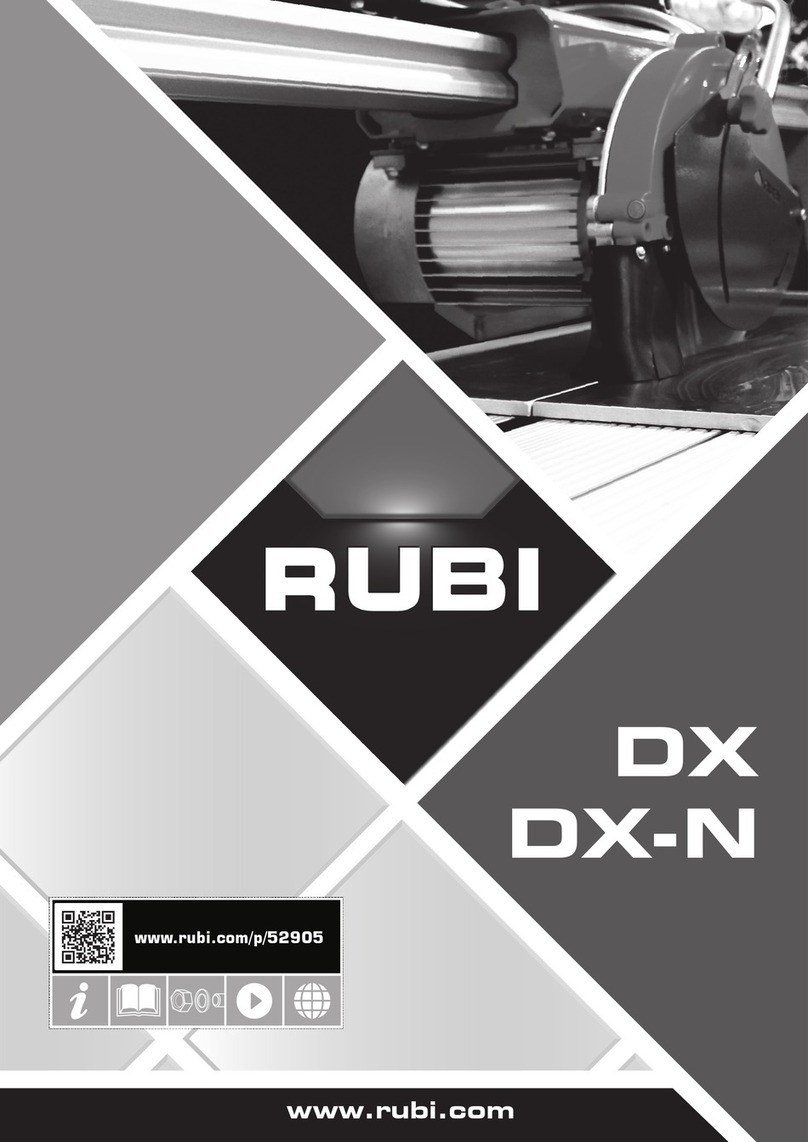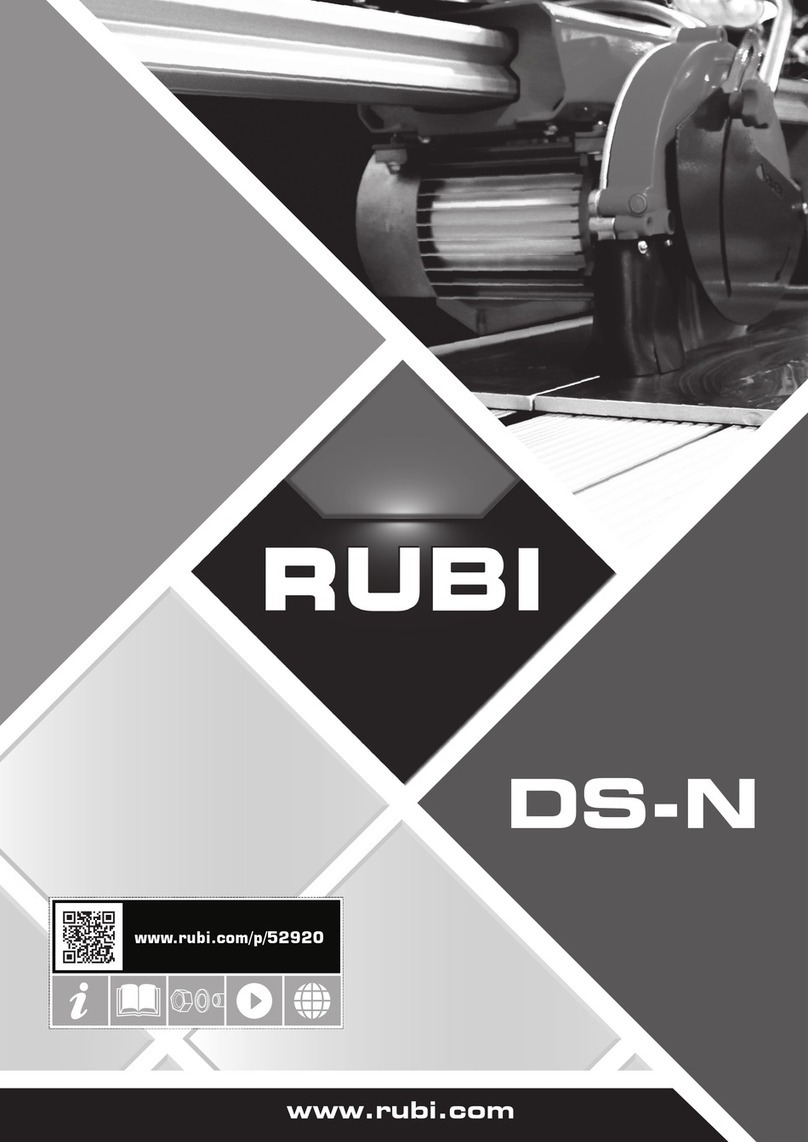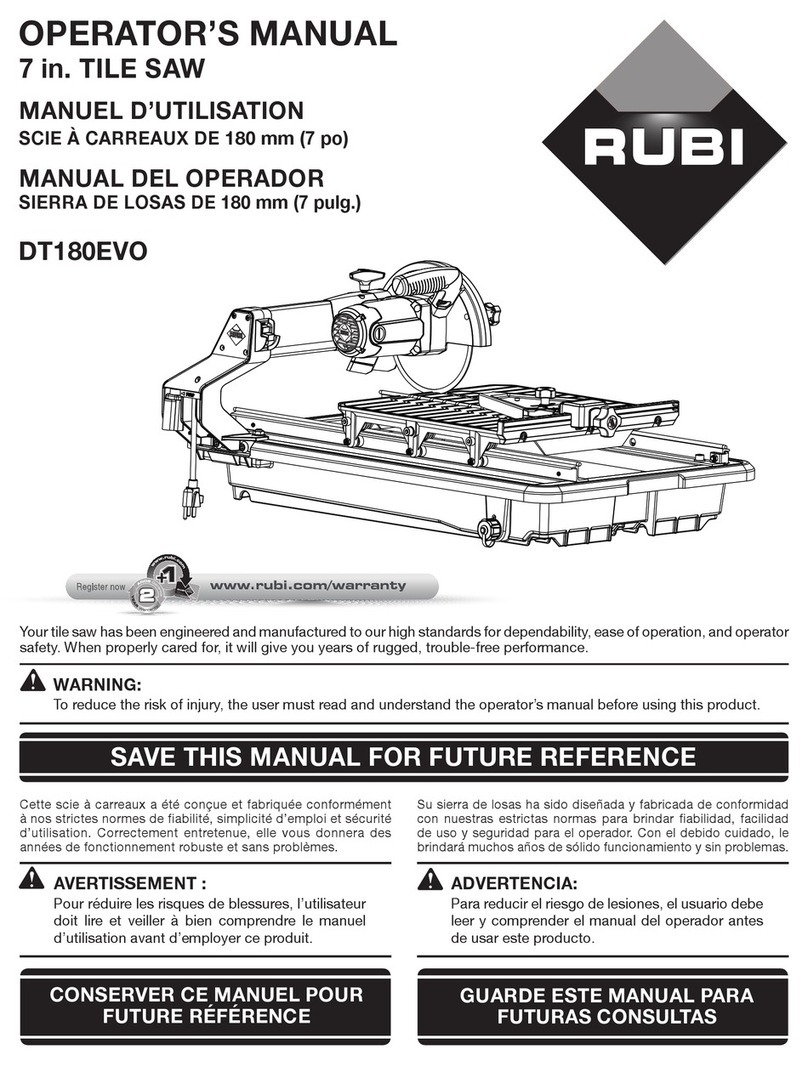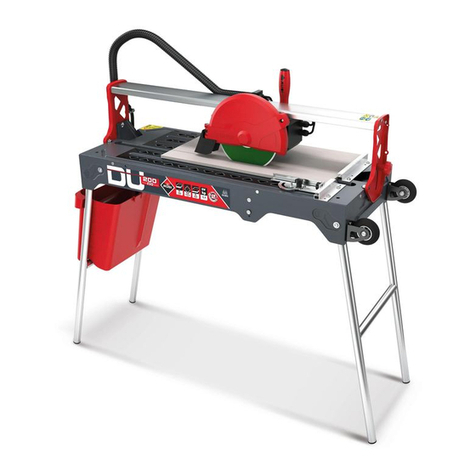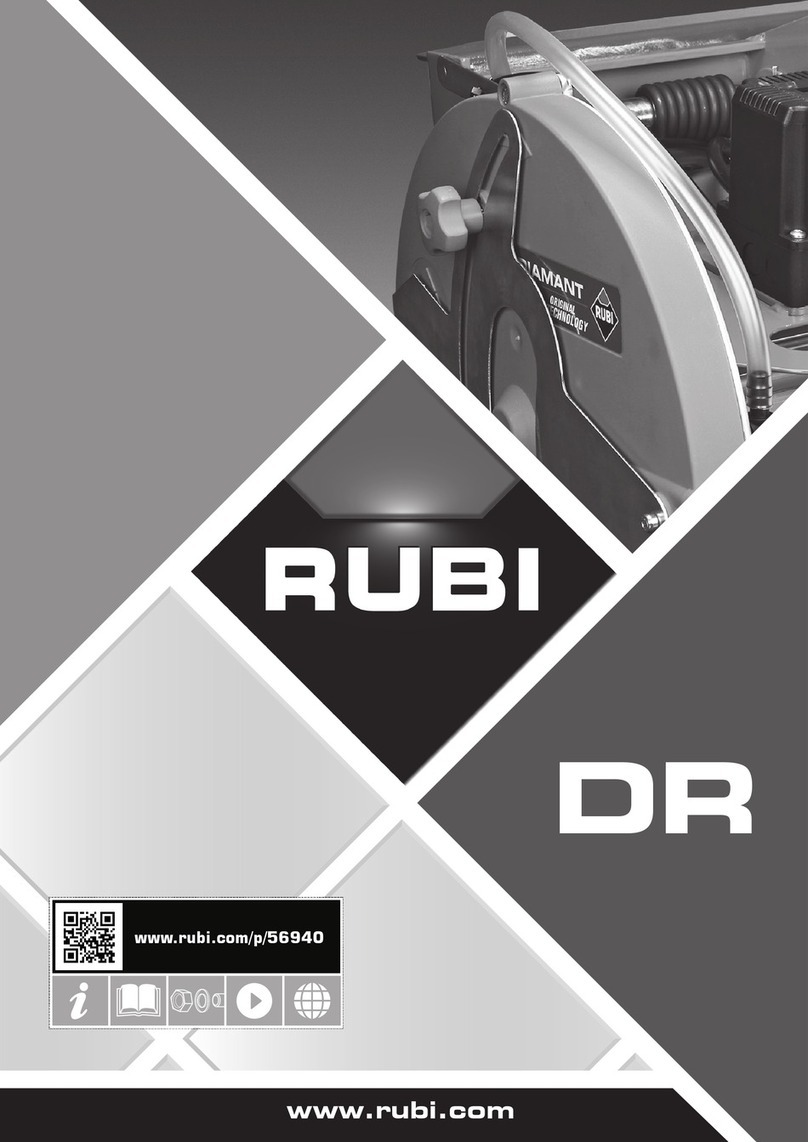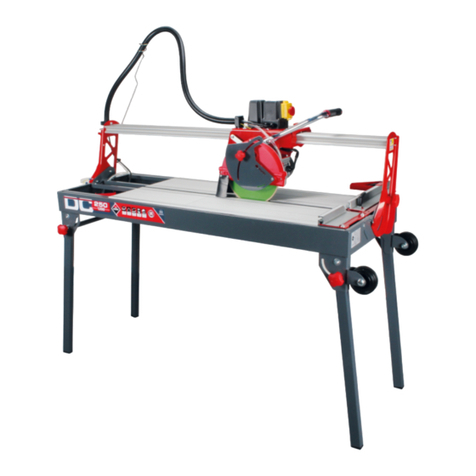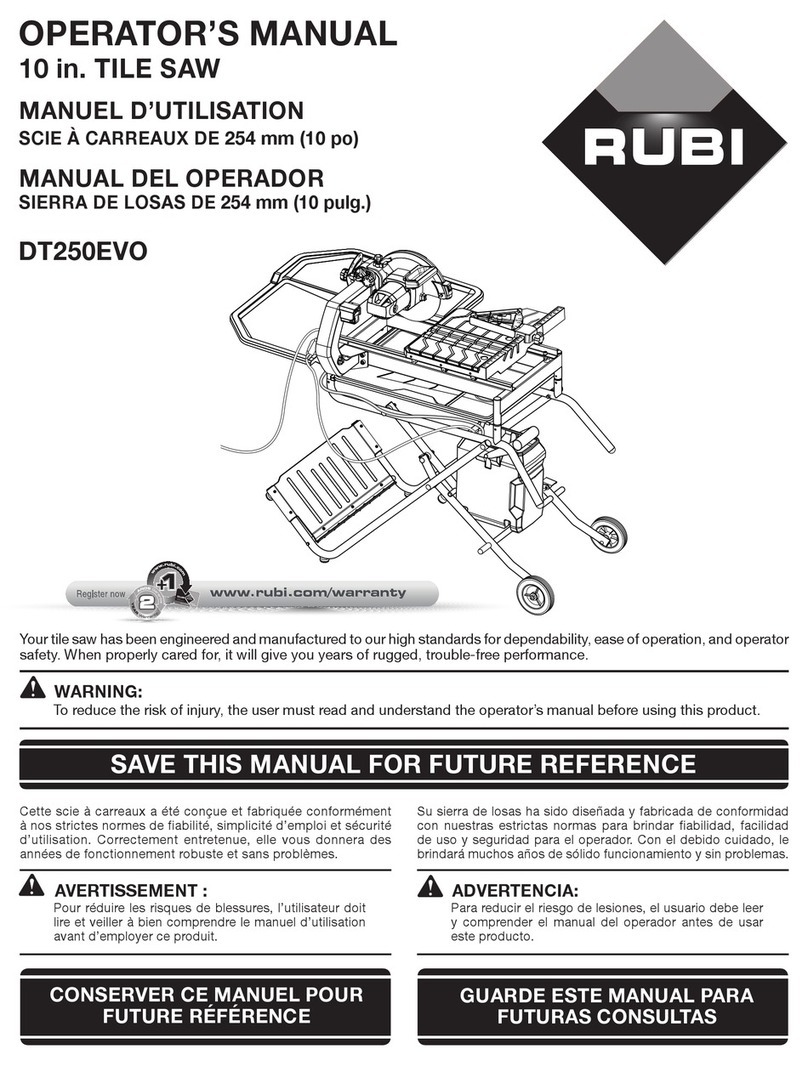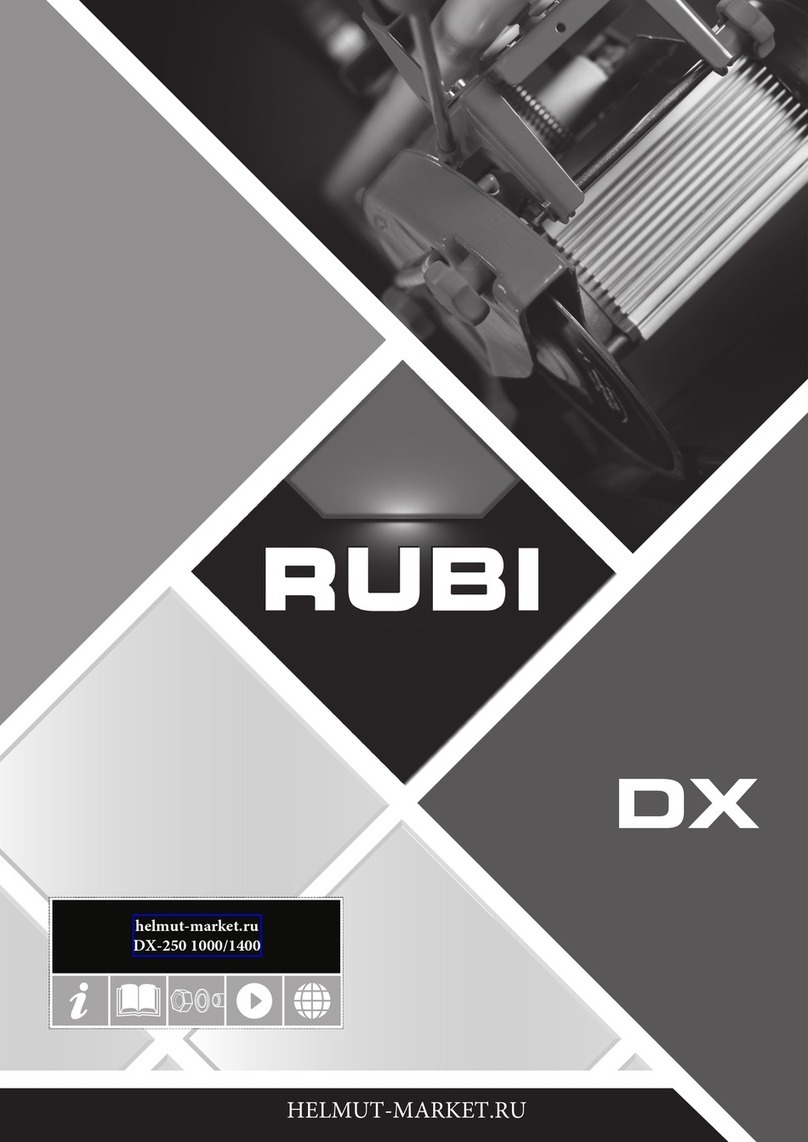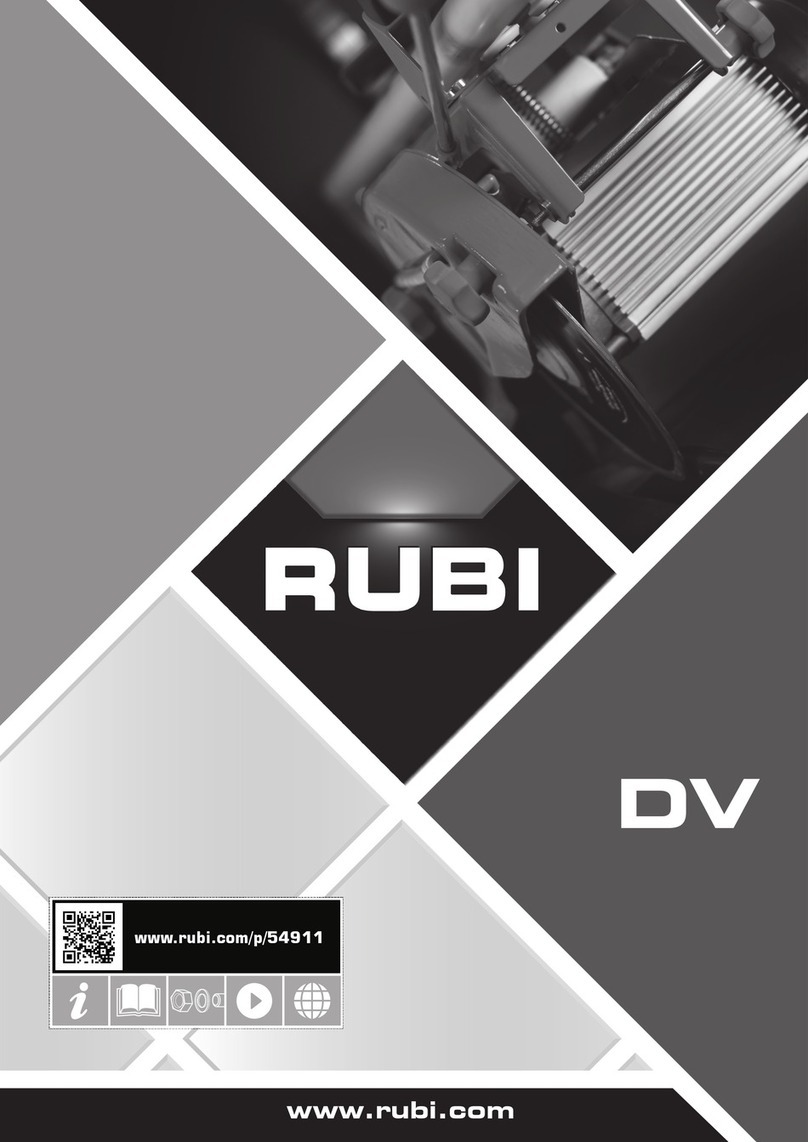
3
ESPAÑOL
TRADUCCIÓN DEL MANUAL ORIGINAL ESPAÑOL
TRADUCCIÓN DEL MANUAL ORIGINAL
tivas fuera del alcance de los niños y no per-
mita el manejo de la herramienta eléctrica
a personas no familiarizadas con las herra-
mientas o con estas instrucciones.
5. Mantenga las herramientas eléctricas.
Compruebe que las partes móviles no es-
tén desalineadas o trabadas, que no haya
piezas rotas u otras condiciones que pu-
edan afectar el funcionamiento de las her-
ramientas eléctricas. Las herramientas
eléctricas se reparan antes de su uso, cu-
ando están dañadas.
6. Mantenga las herramientas de corte afila-
das y limpias.
7. Use la herramienta eléctrica, accesorios
y puntas de herramienta, etc. de acuerdo
con estas instrucciones y teniendo en cuen-
ta las condiciones de trabajo y el trabajo a
desarrollar.
SERVICIO TÉCNICO
1. Haga revisar su herramienta eléctrica por
un servicio de reparación cualificado usan-
do solamente piezas de recambio idénticas.
INSTRUCCIONES DE SEGURIDAD PARA
LAS OPERACIONES DE CORTE
ADVERTENCIAS DE SEGURIDAD PARA
MÁQUINAS DE CORTE
1. El protector de la máquina debe estar firmemente
sujeto a la herramienta y correctamente posicio-
nado para ofrecer la máxima seguridad, teniendo
en cuenta siempre, que haya la menor superficie
de disco expuesta al operario. Sitúese, usted y el
resto de personal, lejos del plano de trabajo del
disco. El protector ayuda a proteger al operario
de los fragmentos rotos y del contacto accidental
con el disco.
2. Utilice únicamente discos de diamante con la her-
ramienta eléctrica. El hecho de que un accesorio
se pueda conectar a la herramienta eléctrica, no
implica que su utilización se segura.
3. La velocidad nominal del accesorio debe ser como
mínimo igual a la velocidad máxima indicada en la
herramienta eléctrica. Aquellos accesorios que
trabajen más rápido que su velocidad nominal pu-
eden romperse y salir proyectados.
4. Los discos deben ser utilizados únicamente para
sus aplicaciones recomendadas. Por ejemplo: no
emplee las caras del disco de corte para desbaste.
Los discos de corte abrasivos están destinados
para el desgaste periférico, las fuerzas laterales
aplicadas a estos discos pueden hacer que se rom-
pan.
5. Use siempre platinas en perfecto estado y con
el diámetro correcto para el disco seleccionado.
Una platina adecuada sujeta el disco y reduce el
peligro de rotura.
6. El diámetro exterior y el grosor del accesorio
deberán corresponder con las capacidades de su
herramienta eléctrica. Los accesorios de tamaño
erróneo no se pueden asegurar o controlados
adecuadamente.
7. Los diámetros internos de los discos y las platinas
deben ajustar adecuadamente al eje de la herra-
mienta eléctrica. Discos y platinas con diámetros
que no coincidan con el de montaje de la her-
ramienta eléctrica trabajaran desequilibrados, vi-
braran en exceso y pueden causar la pérdida de
control.
8. No utilice discos dañados. Antes de cada uso, in-
speccione los discos de golpes y grietas. Si la her-
ramienta eléctrica o el disco se han caído, inspec-
cione los daños o instale un disco nuevo. Después
de inspeccionar e instalar el disco, colóquese
usted y el resto de personal lejos del plano de tra-
bajo del disco y ponga en marcha la herramienta
eléctrica a máxima velocidad sin carga durante un
minuto. Los discos dañados se rompen durante
este tiempo de prueba.
9. Utilice equipo de protección personal. Depen-
diendo de la aplicación, use mascarilla, gafas o
máscara de seguridad. Si es necesario, use una
máscara antipolvo, protectores auditivos, guantes
y delantal capaz de detener pequeños fragmen-
tos que pudieran ser proyectados. La protección
de los ojos debe ser capaz de detener partículas
generadas por diversas operaciones. La mascarilla
antipolvo o un respirador deben ser capaces de
filtrar las partículas producidas al trabajar. La ex-
posición prolongada al ruido puede causar pérdida
de audición.
10. Mantenga al resto del personal a una distancia
segura del área de trabajo. Cualquiera que entre
en el área de trabajo debe utilizar equipo de pro-
tección personal. Los fragmentos del material tra-
bajado o de un disco roto pueden volar y causar
daños más allá del área inmediata de operación.
11. Sujete la herramienta eléctrica por las superficies
de agarre aisladas cuando realice una operación en
la que el accesorio de corte pueda entrar en con-
tacto con cables ocultos o con su propio cable. Un
accesorio de corte en contacto con un cable “con
corriente” puede hacer que las partes metálicas
expuestas de la herramienta eléctrica “conduzcan
la corriente” y le provoquen una descarga eléc-
trica.
ESPAÑOL
TRADUCCIÓN DEL MANUAL ORIGINAL

